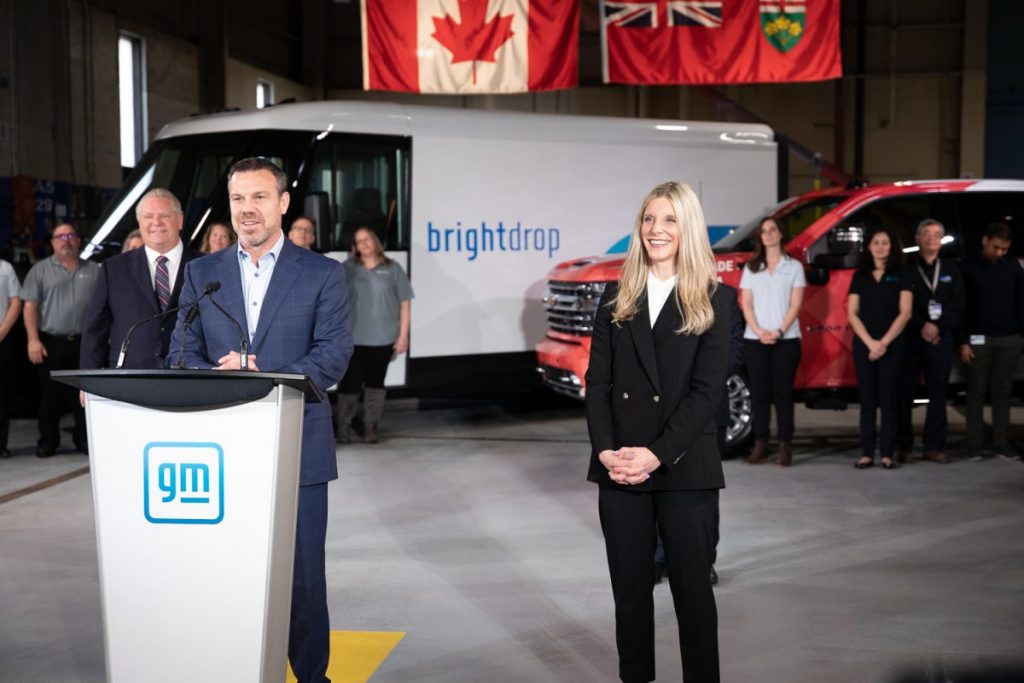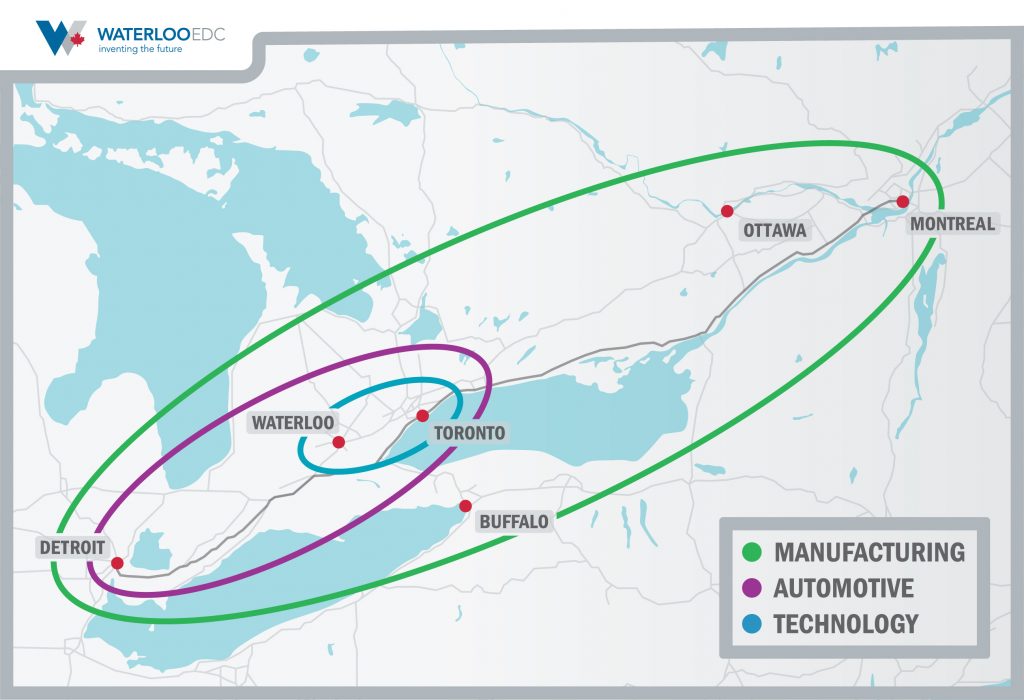The news that Stellantis and LG Energy Solutions are partnering on a Canadian electric vehicle (EV) battery manufacturing facility was transformative for the automotive industry in Canada. It’s a CA$5bn (US$4.1bn) investment—the biggest single automotive investment in Canadian history. It will have an annual production capacity of 45 gigawatt hours and will create 2,500 jobs. It’s a pillar for the foundation of Canada’s EV ecosystem, but it’s just the tip of the iceberg.
The Stellantis/LG investment is the latest in a series of announcements that ensure the Canadian automotive corridor will continue to thrive, while highlighting significant opportunities for American companies that can support Canada’s focused shift to building an EV supply chain.
Canadian EV investments in a nutshell
Let’s start with the automotive manufacturers. First, the most award-winning automotive manufacturing plant in North America—Toyota’s Cambridge facility, located near Windsor, Ontario, across the bridge from Detroit, Michigan—made a CA$1.4bn investment that paved the way for production of hybrid versions of the Toyota RAV4, as well as the Lexus RX hybrid and Lexus NX hybrid.
In late-2020, Ford announced a US$1.8bn investment to build five new battery EVs in Canada. Shortly after, Fiat Chrysler announced a US$1.5bn investment to build EVs that will likely use the batteries manufactured through the Stellantis/LG plant. Finally, GM has invested US$1bn to transform one of its existing plants into a hub for producing electric commercial delivery vans and another US$400m for a battery plant. In each case, federal and provincial governments have stepped up to support these investments.
That’s all of the Big Three plus Toyota making massive investments in the last few years.
It doesn’t begin and end with batteries, though. North America has a shortage of the materials for manufacturing batteries—nickel, cobalt, lithium—and the government has committed CA$3.8bn to fund the development of the country’s critical minerals industry. Only hours from Toronto and Waterloo is a massive untapped reserve of battery-making minerals in Northern Ontario.

A compact automotive ecosystem
Notably, the vast majority of this new investment is happening within a 250-mile-long corridor. The main Canadian manufacturing cluster is quite a bit larger—stretching from the base of Ontario into Quebec—but the most productive automotive corridor runs from Windsor, Ontario, to Oshawa, Ontario, a trip that takes about 3.5 hours on the 401 superhighway that connects them.
As the map below indicates, the manufacturing and automotive corridors overlap, and inside both of them is the Toronto-Waterloo Corridor, which is North America’s second largest tech cluster. There is no other location in North America—and few locations in the world—where a major automotive manufacturing ecosystem contains a major technology ecosystem.
For obvious reasons, this has led to a substantial amount of investment in new automotive technologies. Waterloo has more than 80 autotech companies—including Geotab, ESCRYPT, OTTO Motors—working on everything from EV analytics and automotive security to battery recycling. Waterloo is right in the middle of each of the concentric circles on the map. This mid-sized community of 600,000 is home to those autotech companies and North America’s most award-winning automotive manufacturing facility—Toyota’s Cambridge facility has won 16 J.D. Power Awards. It is also within an hour drive of major Honda, Ford and General Motors manufacturing facilities. Everything is very close together, accessible for suppliers and tech innovators alike.

An opportunity for global automotive suppliers and innovators
What all this signals is that the Canadian automotive corridor is exceptionally receptive to new EV and mobility investments, whether they are from Canadian companies, American companies or those that are further afield. Canada is committed to growing its EV supply chain—fast—and the governments are proving to be very willing investment partners. There are also gaps—in mineral mining, refining and most importantly, processing, battery component manufacturing, refurbishing and recycling and EV components—that means opportunity for OEMs and suppliers looking to grow.
And not just grow in Canada, either. The US-Mexico-Canada Agreement (USMCA) means that most components produced here won’t face tariffs at the US-Canada border. This makes the Michigan automotive cluster a prime potential customer. It’s only a few hours drive from Toronto and just across a river from Windsor. Other locations that have major automotive manufacturing clusters—Kentucky, Tennessee, Indiana—are all within a less than a day’s drive.
And it’s not just the US, either. For developers of products with a global market, Canada has the world’s most comprehensive trade network, including agreements with the European Union, Japan and the UK.
Canada is also fertile ground for companies that are looking to invest in research and development. The tax credit and grant programmes are very generous and there is an excellent reservoir of automotive talent. The University of Waterloo, for example, located in the middle of Canada’s automotive corridor, is home to Canada’s largest collection of automotive researchers and has deep experience helping manufacturers and suppliers develop new products to climb the value chain. It is so close to America’s automotive hotbeds that the transfer of information and expertise is seamless.
The global transition to EVs is a once-in-a-generation happening, and for companies looking to grow, Canada has the best deal on the table.
About the author: Tony LaMantia is President and Chief Executive of the Waterloo EDC




